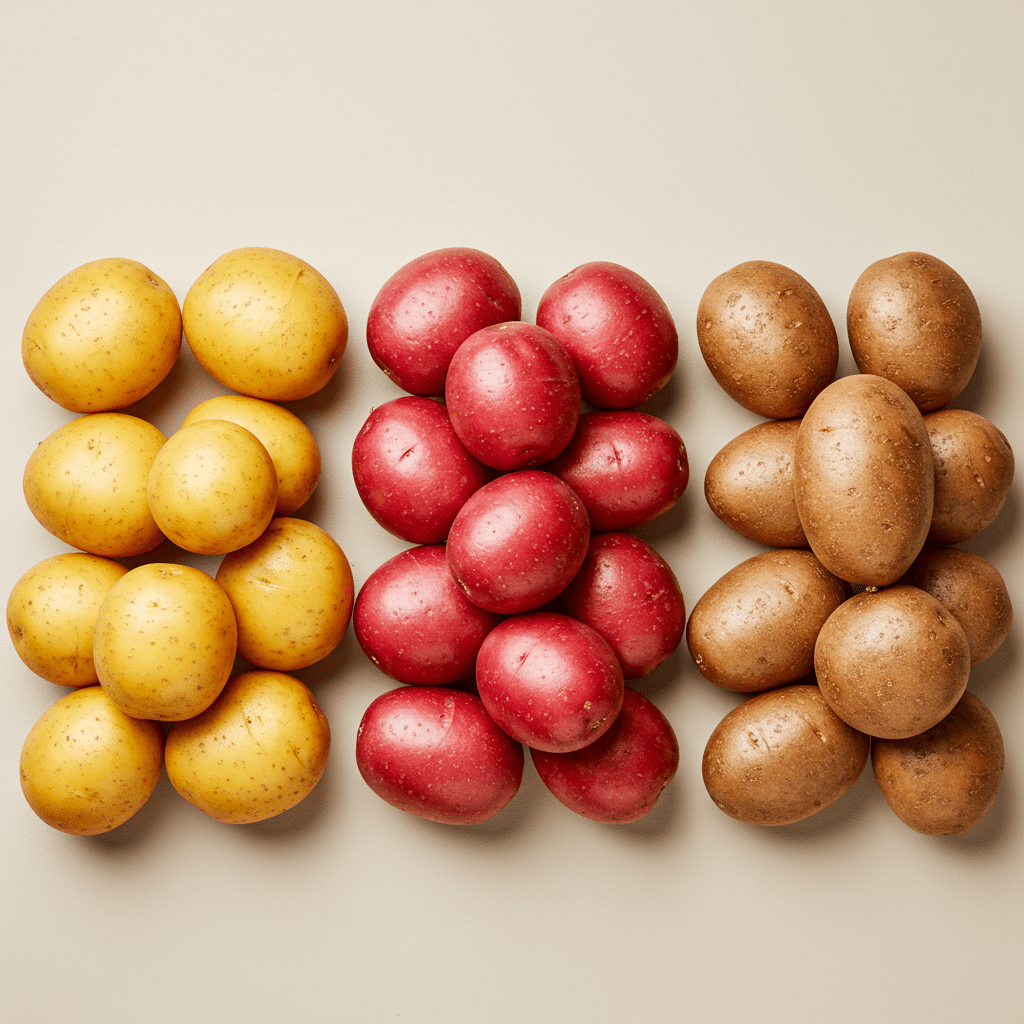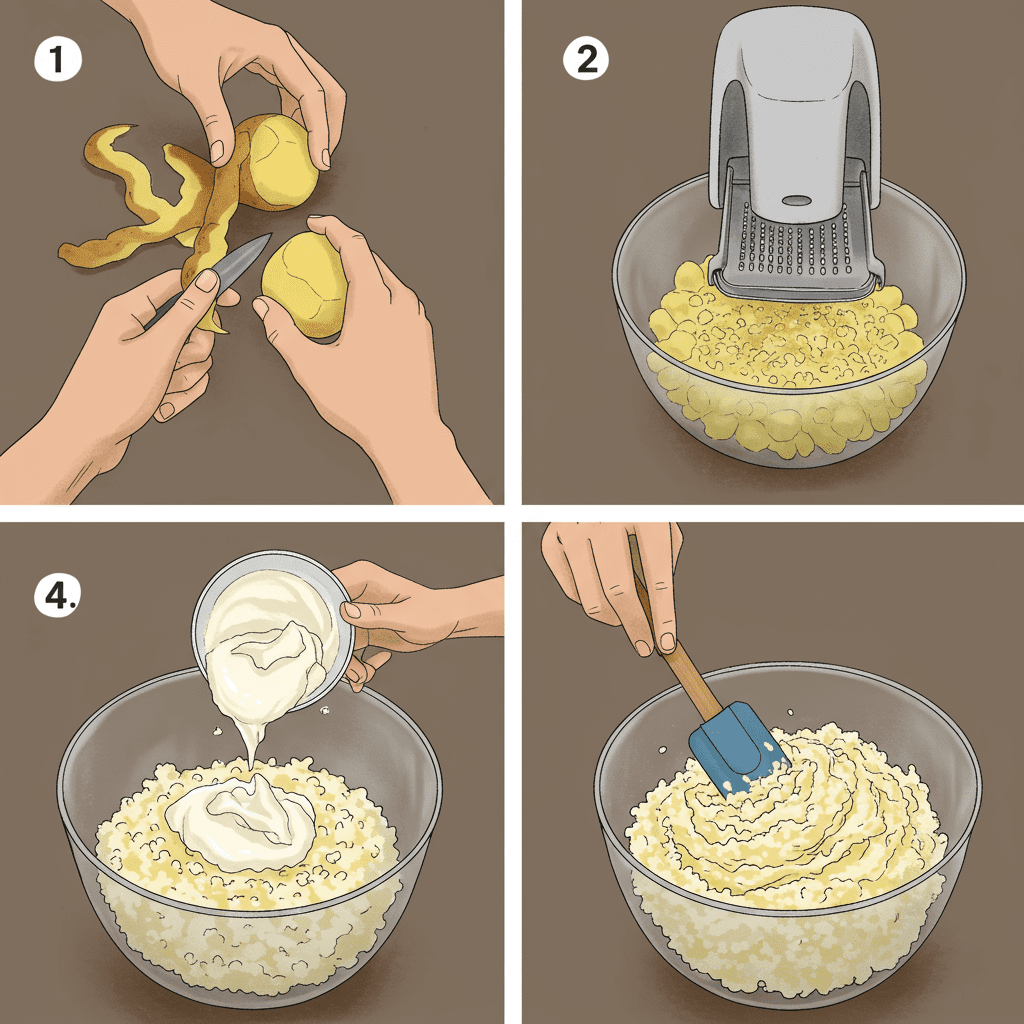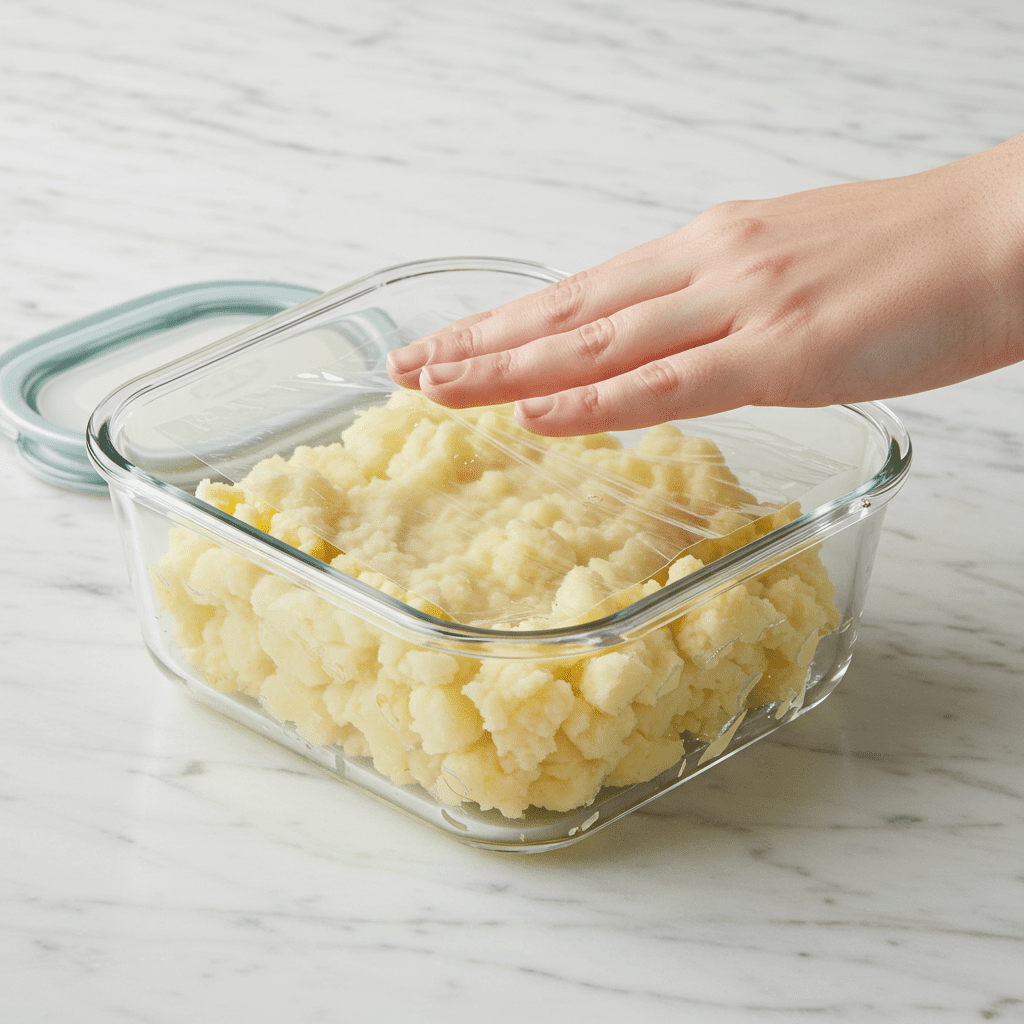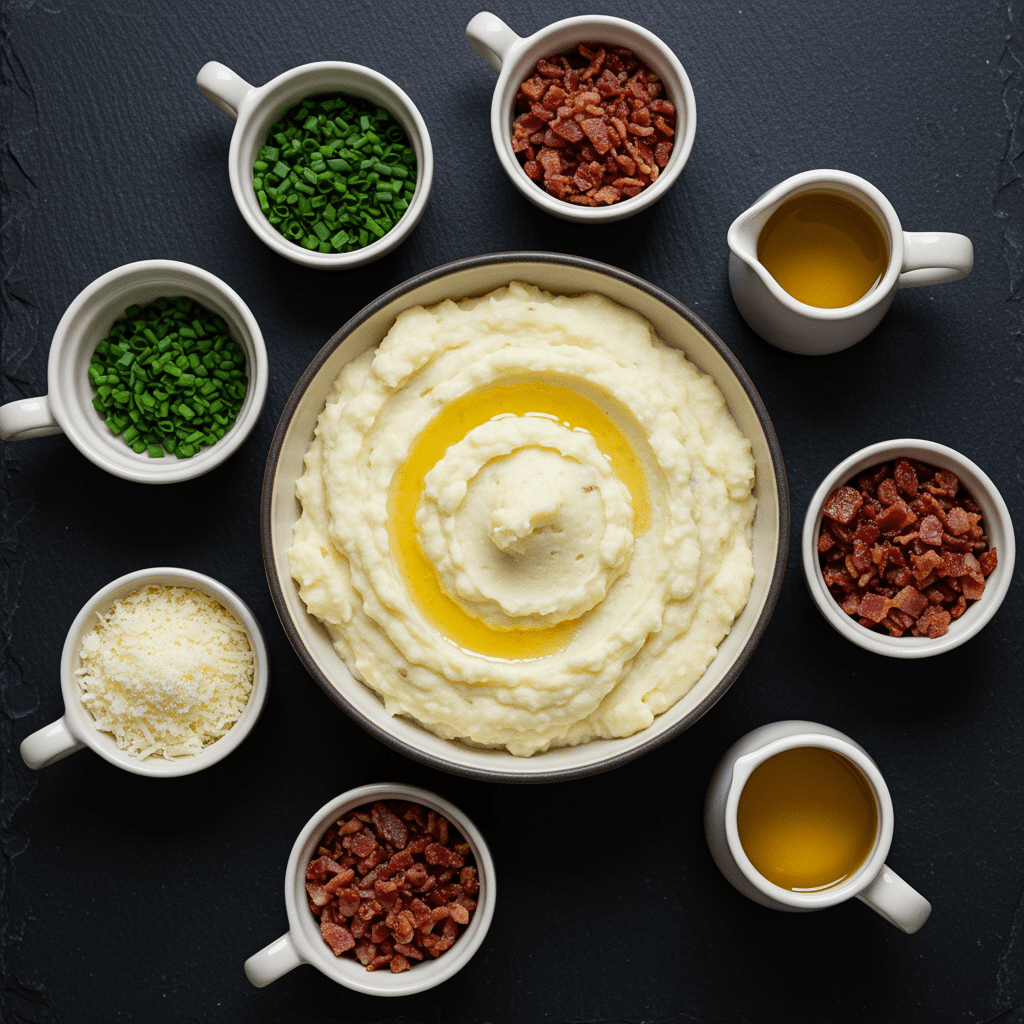The Secret to Unbelievably Creamy Mashed Potatoes Is Ricotta

Mashed potatoes are the undisputed champion of comfort food. They’re a staple on holiday tables and a welcome side dish any night of the week.
But what if I told you there’s a simple way to make them even better? I’m talking lighter, creamier, and packed with a subtle, rich flavor that feels both familiar and brand new.
The secret is an ingredient you probably have in your fridge right now: ricotta cheese. Forget loading them up with endless butter and heavy cream.
As a dietitian and a food lover, I’m here to show you how adding ricotta creates a luxuriously smooth texture and a gentle tang that perfectly complements the earthy potato flavor. It’s time to elevate your mash.
- What Makes These Ricotta Mashed Potatoes So Special?
- Which Potatoes Work Best For Mashing?
- Why Full-Fat Ricotta Is a Must
- How to Make the Perfect Ricotta Mash Step by Step
- The Secret to Avoiding Gummy Potatoes
- A Healthier Spin on a Classic Comfort Food?
- Great Ways to Flavor and Garnish Your Mash
- What Should I Serve With These Potatoes?
- How to Store and Reheat Leftovers Like a Pro
- Conclusion
What Makes These Ricotta Mashed Potatoes So Special?

The magic of this recipe lies in the texture and taste that ricotta brings to the table. Unlike heavy cream or cream cheese, which can make potatoes dense and heavy, whole milk ricotta creates a uniquely light and airy creaminess.
Its fine curd and high moisture content whip into the potatoes beautifully, giving them a velvety, almost cloud-like consistency. From a flavor perspective, ricotta adds a subtle, milky sweetness with a very slight tang.
This complexity cuts through the richness, making the dish taste more balanced and less heavy than its traditional counterparts. It’s a sophisticated upgrade that feels gourmet without any extra fuss.
Which Potatoes Work Best For Mashing?

The type of potato you choose is the foundation of your mash. Potatoes vary in starch content, which directly impacts the final texture.
For this recipe, my top recommendations are Yukon Gold or red potatoes. According to culinary experts at The Kitchn, Yukon Golds have a medium starch content and a naturally buttery flavor, making them perfect for a creamy, dense mash that doesn’t get watery.
Red potatoes have lower starch and a waxy texture, which helps them hold their shape well and results in a smooth, yet slightly more textured mash. While you can use high-starch Russet potatoes, they absorb more water and can easily become gummy if overworked, so handle them with extra care.
Why Full-Fat Ricotta Is a Must

Let’s talk about our star ingredient. Ricotta, which means “recooked” in Italian, is a fresh cheese made from the whey leftover from making other cheeses.
For this recipe, it’s crucial to use full-fat (whole milk) ricotta. The higher fat content is essential for achieving that signature rich flavor and ultra-creamy texture.
Skim or part-skim versions have higher water content and will make your potatoes loose and less flavorful. As a dietitian, I also appreciate the nutritional bonus ricotta provides.
According to the USDA FoodData Central, whole milk ricotta cheese is a great source of protein and calcium, adding valuable nutrients to this classic comfort food. A half-cup serving can pack around 14 grams of protein! If you’re a fan of this versatile cheese, learning how to make the creamiest whipped ricotta dip is a great next step.
How to Make the Perfect Ricotta Mash Step by Step

Ready to create the perfect mash? Here’s the simple process broken down:
- Prep and Boil: Start by peeling your potatoes and cutting them into uniform 1- to 2-inch chunks. This ensures they all cook at the same rate. Place them in a large pot, cover with cold, salted water, and bring to a boil. Cooking them until they are very tender (a knife should slide in with no resistance) is key.
- Melt and Infuse: While the potatoes are boiling, gently melt your butter in a small saucepan and sauté the minced garlic for a minute or two until it’s fragrant. This blooms the garlic flavor. Take it off the heat and stir in your milk and ricotta to warm them through.
- Drain and Dry: Once the potatoes are cooked, drain them thoroughly. You can even return them to the hot, empty pot for a minute to let any excess moisture steam off. A dry potato is a fluffy potato.
- Mash and Mix: For the absolute best texture, pass the cooked potatoes through a potato ricer or food mill. This breaks them down without overworking them. Then, add your warm ricotta mixture, salt, and pepper, and gently fold everything together with a spatula until just combined. Taste and adjust seasoning as needed.
The Secret to Avoiding Gummy Potatoes

Have you ever ended up with a sad, gluey bowl of mashed potatoes? The culprit is almost always over-mixing.
As explained by the food scientists at Serious Eats, potatoes are full of starch cells. When you mash them, these cells swell and burst.
The more you mix, the more starch is released, creating a gummy, sticky texture. Here are the three levels of mashing tools, from best to worst:
- Potato Ricer or Food Mill (Best): These tools gently press the potato into fine threads without over-agitating the starch. This is the professional’s secret to a perfectly light and fluffy mash.
- Hand Masher (Good): A classic hand masher works well. Just be sure to mash until the lumps are gone and then stop. Don’t be tempted to keep whipping them.
- Hand Mixer or Food Processor (Avoid): The high speed of an electric mixer or the sharp blades of a food processor are a recipe for disaster. They violently rupture the starch cells, guaranteeing a gluey consistency. For this recipe, folding in the ricotta gently with a spatula is all you need.
A Healthier Spin on a Classic Comfort Food?

While mashed potatoes are a quintessential comfort food, this version offers a slight nutritional edge. By swapping a portion of the traditional butter and heavy cream for ricotta, you’re making a smart substitution.
As mentioned, ricotta provides a meaningful amount of protein and calcium. This can contribute to a greater feeling of satiety, or fullness, compared to a dish that is primarily fat and carbohydrates.
Comfort foods play an important psychological role, and as the Cleveland Clinic notes, enjoying them in moderation is part of a healthy relationship with food. This recipe allows you to fully indulge in that comforting experience while getting a little more nutritional bang for your buck.
It’s a wonderful example of how a simple ingredient swap can enhance a dish without sacrificing its soul.
Great Ways to Flavor and Garnish Your Mash

These ricotta mashed potatoes are a perfect canvas for other flavors. While delicious on their own, you can easily customize them to match your meal or mood.
- Fresh Herbs: Finely chopped chives are a classic for a reason, but you could also try fresh parsley for brightness, dill for a unique tang, or even a small amount of rosemary or thyme for a woodsy, aromatic flavor.
- Roasted Garlic: Instead of sautéing raw garlic, try roasting a whole head of garlic and squeezing the soft, sweet cloves into the mash for a deeper, less pungent flavor.
- Cheese, Please: For an extra-cheesy version, fold in a quarter-cup of finely grated Parmesan or Pecorino Romano cheese along with the ricotta.
- Brown Butter: Before adding the garlic, let the butter melt and cook until it foams and golden-brown bits form at the bottom. This adds an incredible nutty, toasted flavor.
- A Touch of Spice: A pinch of nutmeg or a dash of white pepper can add a subtle warmth that complements the potatoes beautifully.
What Should I Serve With These Potatoes?

These potatoes are versatile enough to work with almost any main course. Their creamy, slightly tangy profile makes them a perfect partner for rich, savory dishes.
- Holiday Feasts: They are a natural fit for a Thanksgiving or Christmas table, standing up beautifully next to roasted turkey, glazed ham, or a prime rib roast. They’re also the perfect base for using up holiday leftovers in a cozy turkey pot pie the next day. For a different but equally festive side, consider a cozy sweet potato and apple bake.
- Weeknight Dinners: Serve them alongside a simple roasted chicken, pan-seared salmon, or pork chops. They’re also perfect for soaking up the sauce from a hearty beef stew or braised short ribs.
- Vegetarian Mains: Pair them with mushroom-based dishes like a hearty mushroom gravy or roasted portobello mushrooms for a deeply satisfying vegetarian meal.
How to Store and Reheat Leftovers Like a Pro

Leftover mashed potatoes can be just as good as the first day if you store and reheat them correctly. The key is to preserve their moisture.
Storing: Let the potatoes cool completely, then transfer them to an airtight container. Press a piece of plastic wrap directly onto the surface of the potatoes before putting the lid on. This prevents a dry film from forming. They will keep well in the refrigerator for up to 4 days.
Reheating:
- Stovetop (Best Method): Place the cold mashed potatoes in a saucepan over low heat. Add a splash of milk or cream and stir gently until they are heated through and have returned to their creamy consistency.
- Microwave (Quickest Method): Place the potatoes in a microwave-safe bowl. Add a splash of milk, cover, and microwave in 60-second intervals, stirring in between, until hot.
Conclusion
Switching up your mashed potato routine with ricotta is more than just a new recipe—it’s an upgrade in texture, flavor, and even nutrition. You get a lighter, more elegant creaminess without relying entirely on heavy fats, plus a boost of protein and calcium.
It’s a simple change that delivers a sophisticated, delicious result, proving that comfort food can still hold a few wonderful surprises. Give it a try for your next family dinner or holiday feast; I have a feeling it will become a new tradition.

[…] so they become tender and creamy without completely disintegrating, a texture we also strive for in unbelievably creamy mashed potatoes. Russet potatoes are higher in starch and can work, but they will break down more, resulting in a […]
[…] base—instead of heavy cream soups, we use plain Greek yogurt, much like how we use ricotta for unbelievably creamy mashed potatoes. This simple change dramatically increases the protein content, which is essential for building and […]